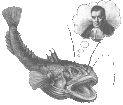UW Aquatic & Fishery Sciences Quantitative Seminar
A. Ole Shelton
Northwest Fisheries Science Center, NOAA
Using spatio-temporal models to identify drivers and trend of eelgrass in Puget Sound over the past 40 years (1972-2012)
Abstract
Habitat-forming species such as eelgrass and algae (e.g. Laminaria spp., Nereocystis luetkeana) play a vital role in the life-history of a wide range of marine species – e.g. providing shelter for juvenile salmon, forage for migrating birds, and spawning habitat for herring. Despite the ecological importance of such foundation species, a lack of long-term data has limited our understanding of how the occurrence and abundance of these species has changed both spatial and temporally. I will present a massive data set of spatially referenced surveys of nearshore vegetation collected by the Washington Department of Fish and Game to provide the first description of spatial and temporal patterns occurrence of nearshore vegetation types in Puget Sound, Washington (1972-2012). I focus on eelgrass and show remarkable stability in Puget Sound eelgrass as a whole. However, the eelgrass trend in aggregate obscure distinct trends (both positive and negative) that occur at the local level. I will talk about spatio-temporal models and their use in identifying environmental and land use variables that may be affecting eelgrass populations

